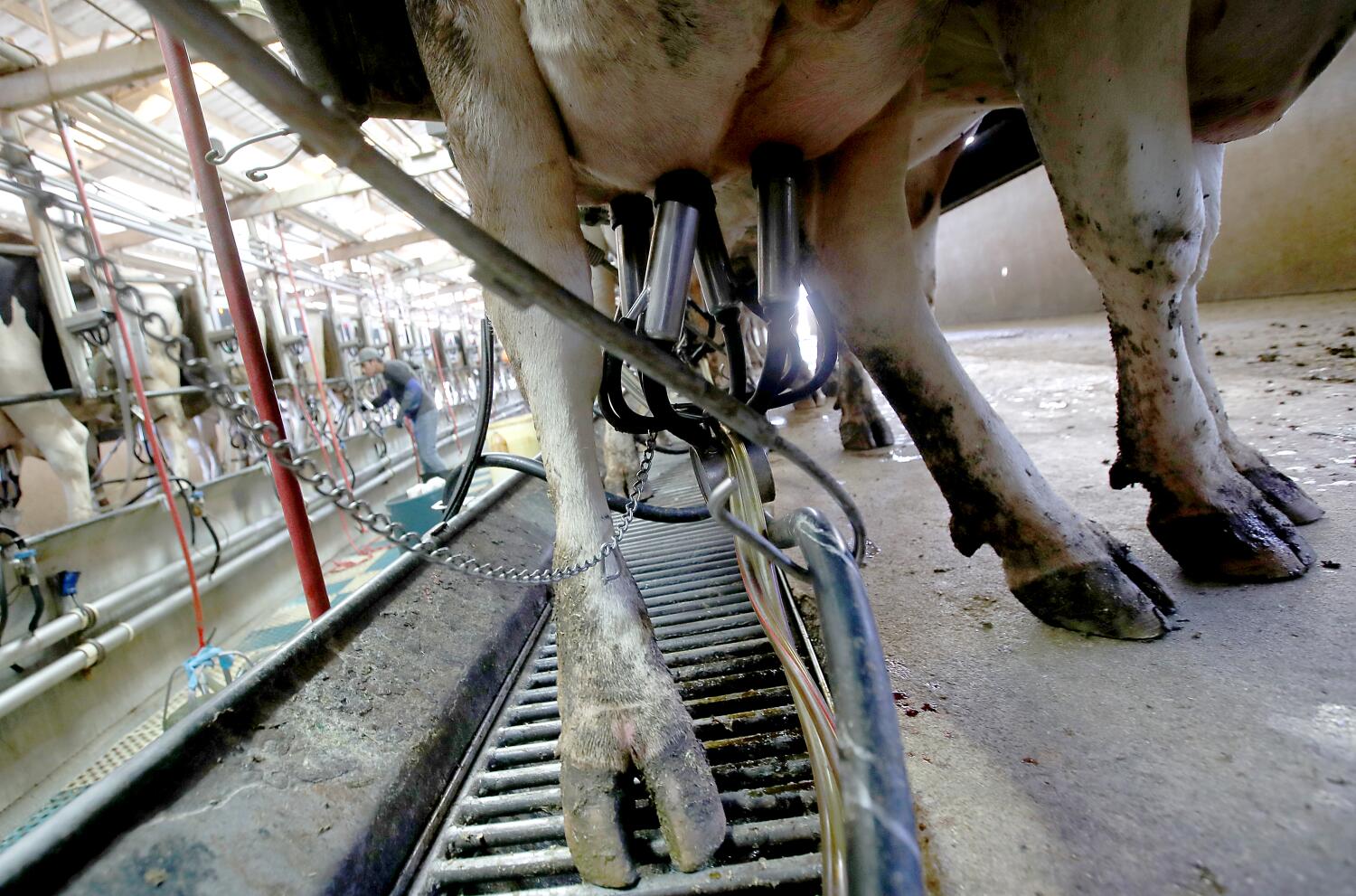Nearly a year after a wild bird infected with H5N1 avian flu presumably passed its viral baggage to a dairy cow in the Texas panhandle — which has subsequently led to the infection of more than 700 herds nationwide and sickened at least 32 dairy workers — the nation’s agriculture department announced Friday that it will sample the nation’s milk supply to test for the virus.
The federal order requires dairy farmers to collect and share raw milk samples for testing — if requested — by the U.S. Department of Agriculture. It also lays out a staged testing strategy that will allow the federal agency to track and monitor the disease.
The National Milk Testing Strategy, which the new milk testing regimen is called, “is a critical part of our ongoing efforts to protect the health and safety of individuals and communities nationwide,” according to a prepared statement from Xavier Becerra, the U.S. secretary of Human and Health Services.
Initially, the order will only apply to six states — California, Colorado, Michigan, Mississippi, Oregon and Pennsylvania.
Steve Lyle, a spokesman for the California Department of Food and Agriculture, said the order is incidental, bringing “no changes for California. We are already doing this.”
While California, Colorado and Michigan have all reported positive herds, the three others have not. Testing regimens and investigations have already been underway in the infected states — as well as in Pennsylvania, which in late November, began its own “Precautionary Bulk Milk Testing at Processing Plants” program.
While Oregon has not had a H5N1 outbreak in dairy cows, it has reported the disease in commercial poultry, wild birds and, last month, two pigs.
Mississippi has roughly 50 herds statewide, with each farm averaging 149 cows.
The new milking plan is designed as a step-by-step plan, with the end goal of eradicating the disease from the nation’s herds — an objective few epidemiologists or virologists think, at this point, is possible.
In the first stage, testing will occur at all dairy processing facilities within a given state, allowing the federal agency to determine if and where the virus is residing. The next stage will allow the federal agency to drill down deeper by moving the testing to bulk tanks.
If the virus is found, the third stage goes into action, triggering an even more granular investigation by identifying farms and herds that are positive — allowing for “rapid response measures,” including biosecurity programs such as movement controls and contact tracing.
If, however, no virus is found in a state, bulk tank testing frequency will progressively decrease — going from weekly to monthly to quarterly, assuming the state’s tests remain negative.
Finally, there is the fifth stage, known as “Demonstrating Freedom from H5 in U.S. Dairy Cattle.”
That’s when, according to the statement, states can begin more periodic sampling and testing “to illustrate long-term absence from the national herd.”

